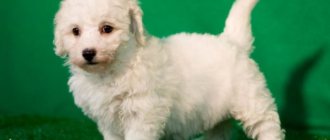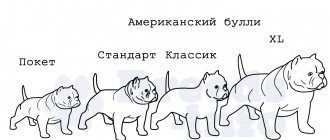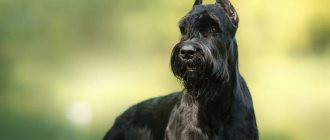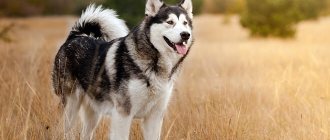The very nature of Sakhalin and the Kuril Islands played a role in the breeding of cats of the Kuril Bobtail breed. These animals got their name from a geographic location and reflected in their appearance the wild and harsh beauty of the Far East. The description, characteristics of the breed and other interesting information about these cats will be useful to beginners and experienced fans of furry creatures.
Brief history of the breed
The history of the origin of short-tailed cat breeds goes back centuries. However, the standard characteristics of the Kuril Bobtail were described and qualified recently, in the 90s of the last century. Therefore, this cat breed is considered relatively young.
The wild ancestors of bobtails lived on the Kuril Islands. In the 18th century, active development of the Far East began. Russian merchants and travelers brought domestic cats to the archipelago. They interbred with wild animals. The result of this was the emergence of a new breed - the domestic Kuril cat.
Kurilian Bobtail: interesting facts
It is useful for many lovers of bob-tailed cats to learn about them:
- A bobtail is also a breed of Old English Sheepdog, a large herding dog. This sometimes causes confusion. Does the Kuril cat breed have a “dog” name? But the explanation is simple: the word “bobtail” translated from English means “short tail.” It looks like a rabbit, like a pompom, and is the “calling card” of such animals;
- The shape of each cat's tail is unique, like a person's fingerprints;
- Sometimes the genetic memory of animals makes itself felt. Then, in frequent cases, bobtail litters end up with kittens with long tails or, on the contrary, tailless ones. This is not considered a marriage. However, such cats do not participate in the further maintenance of the Kuril breed;
- According to one version, the presence of a short tail is the result of evolution. This property is due to the need for cats to adapt to harsh survival conditions;
- Kurilian Bobtails are very strong. Under natural conditions, a cat can catch fish weighing up to 6 kg;
- Bobtail cats give birth only once a year. This makes them different from others;
- male bobtail breeds, along with cats, actively participate in raising offspring;
- When kept at home, bobtail claws catch on carpets and “clack” on the floor. They cannot fully retract on the paws of cats of this breed.
Diseases
The immunity of cats of this breed is enviable. But they also have weaknesses.
The first thing you should pay attention to is the ponytail, or more precisely, the area under it. At the very first inspection, find out whether there are any cracks, irritation or ulcers. Such a short length is a prerequisite for the occurrence of an inflammatory process or prolapse of the anus. The Kurilian Bobtail should be examined regularly, and if damage is found, take it to a veterinarian for examination. Remember: if you feed your cat poorly, he will develop this kind of illness quickly.
Ordinary sea buckthorn oil helps to deal with small cracks: they lubricate the anus area with it and make sure that the cat does not lick it right away.
The second nuance: in Kuril Bobtails, the urine pH is significantly different from the urine of cats of other breeds (7-7.5 versus the usual 6-6.5). Therefore, they rarely suffer from urolithiasis of the alkaline type.
Timely and regular vaccination will help protect your pet from a number of diseases - rabies, rhinotracheitis, panleukopenia, calicivirus, leukemia, peritonitis. The kitten receives its first vaccinations at the nursery, but in the future you will have to learn the vaccination calendar and take your pet to the doctor yourself.
Information about the procedures is entered into the veterinary passport. You should not vaccinate yourself (if you do not have the appropriate education: a mistake can lead to serious consequences. Do not try to vaccinate your pet against all diseases at once: this is too much stress on the immune system!
Breed description, standards, appearance
Felinologists have given a description of the main characteristics of cats of the Kuril Bobtail breed:
- the body is squat, with well-developed muscles, the back is arched, with a raised croup;
- paws are powerful, the hind legs are longer than the front ones;
- the head is large, rounded trapezoidal; the muzzle is wide, with pronounced “cheeks” and a full, soft chin;
- ears are medium in size, set high, slightly leaning forward;
- the eyes are large, round, slightly slanted; their color matches the base color of the fur coat;
- two types of coat - short or semi-long hair;
- types of colors: white, gray, red, tricolor; black bobtail is very rare;
- the tail is no more than 8 cm long, the number of vertebrae in it is from 3 to 12.
These parameters are used at exhibitions to determine whether a cat meets breed standards.
Kurilian Bobtail: dimensions and weight
Recognized standard of parameters for the Kuril Bobtail:
- size - medium;
- height at the withers does not exceed 30 cm;
- cat weight - in the range from 5 to 8 kg.
Anatomical characteristics
Kurilian Bobtails have several characteristic anatomical features that are unique to this breed:
- The hind legs must be longer than the front legs. Thus, nature made sure that it was easy for the cat to jump onto tall trees and climb branches. Due to the difference in the length of the limbs, an arched curve of the cat's back was formed. Bobtails have an unusual “dancing” gait, and when jumping they resemble a trot. The paws are equipped with sharp and strong claws that do not retract completely;
- The ears are medium in size, with rounded tips. The distance between them should be equal to the width of the ear. In bobtails with semi-long hair, tassels on the tips of the ears are acceptable;
- a straight nose and straight forehead form an elegant profile;
- the tail is the main difference between bobtail cats and other breeds. It doesn't have to be long. The tail can be curved, broken, twisted in different directions. Very similar to the bunny or pompom on a child's hat. Felinologists distinguish several forms of bobtail tail: panicle, stump, spiral.
Detailed article “About cats that look like lynxes.”
Kurilian Bobtail – color and coat type
According to the type of coat, Kuril Bobtails are divided into 2 types:
- smooth-haired cats with thin and short hair with a weak undercoat;
- long-haired Kuril cats with long or medium-length hair with a pronounced undercoat. They have fluffy collars, pants, muffs, and tassels on the ears.
The standard colors of Kurils include:
- smoky;
- bi- or tricolors - two and three colors;
- cream;
- blue;
- tortoiseshell;
- agouti;
- tabby (wild) - striped, spotted, marbled;
- red (red);
- white;
- black is a rare and most popular color among Kurilian Bobtails.
There are variations of the breed's colors, which depend on the color of the cat's undercoat: with a white undercoat - called "silver" or "haze", with a peach - "amber" or "gold".
Possible breed defects
First of all, the tail of the Kuril cat must meet the requirements of the breed standard. Its absence or excessive length is unacceptable. Sometimes there is a “retracted bobtail”, when, if the correct number of vertebrae is present, the tail curls at the very tip. This is also considered a defect.
The main deviations from standard requirements for the breed also include:
- insufficient length of the hind legs;
- eyes that are too prominent or deep-set;
- sharp tips of the ears;
- high cheekbones;
- lack of undercoat;
- deafness;
- deformed spine;
- eroded mucous membrane in the anal area.
Cats with these abnormalities are not allowed for breeding. It is very important to maintain a clean look.
Where to buy and how much it costs
If you wish, you can buy a purebred Kuril Bobtail in the famous kennel “Golden Mean”, located in Moscow. They can also be purchased in any large Russian city, since nurseries for “Kurilov” lovers are available almost everywhere. In Ukraine, these cats can be purchased at the famous “Moreman”. And in Belarus they are sold in the Geppy Gunter nursery, which is located in Minsk.
The price of a kitten of such an unusual breed directly depends on its color, class, place of sale, and also on its pedigree (that is, whether it has direct “Kuril” ancestors). Depending on these reasons, its cost can vary from 2 thousand to 16 thousand rubles.
KURILIAN BOBTAIL //IS IT WORTH OWNING? // my experience
Types of bobtails
Today there are several types of bobtails:
- Kuril cat. It is often called the Siberian or Kamchatka bobtail;
- Japanese Bobtail: has no undercoat and is distinguished by thin but strong bones and a graceful physique;
- Karelian Bobtail: originally from the Karelian Isthmus. Genetically, it is not related to the Kuril branch. Its meow resembles the chirping of birds;
- American Bobtail. The characteristics are very similar to our smoker.
There are no registered breeds of British, Korean, or Canadian Bobtails.
Kurilian Bobtail: character and temperament
The most striking features that define the character of the Kuril Bobtail are the absence of aggression, devotion and affection for people. Unlike many cats, they become attached not to the house, but to the owner. Having appeared in the family, the bobtail chooses its own leader, without whom it cannot imagine its existence.
From the characteristics of the breed it follows that Kurils are sociable and easy-going. Cats immediately learn the rules of behavior and family routine and follow it, getting used to the place allocated to them, the toilet.
There are many features in the habits of Kuril Bobtails that resemble the behavior of dogs. They are often called guard cats. At the slightest suspicion of a threat to their owner, they are ready to fight back the offender.
Cats are easy to train, for example, fetch. They meet and see off the owners at the door of the house. They say that even the greeting meow of bobtails is reminiscent of a dog barking.
Epithets that can be given to cats of this breed: friendly, affable, playful, active, peaceful.
Kurilian Bobtail – breed and children
Representatives of the Kurilian Bobtail cat breed are not at all aggressive towards children. They are not offended by unexpected childish cruelty; they allow themselves to be pulled by their whiskers and pulled by their tail.
Purrs show tender feelings to the baby and surround him with attention. They will play with pleasure, guard their sleep, and with loud meows will warn adults about the danger threatening their child. Bobtail cats are excellent nannies.
Breed and other animals
Bobtails get along well with other cats. They are not jealous by nature. But among its equals, the Kuril cat will definitely try to establish a hierarchy - it is important for him to be the leader in the pack. A pet can easily make friends with a dog.
However, it is better not to have birds, hamsters, or fish in the apartment. After all, the Kuril Bobtail breed retains the natural instincts of a hunter. But in a short time it will rid the house of mice, and when fishing it will become an indispensable “assistant” for the owner, helping to pull the catch out of the water.
Characteristics of Kurils
It turned out that the Kuril Bobtail combines the character qualities of both a wild ancestor and a domestic cat. But there is no clear line between these features.
This is a friendly, trusting cat
. He easily finds a common language not only with his owner, but also with other cats and dogs. The Bobtail is smart and intelligent. Therefore, if he misbehaves or is drawn to dangerous adventures, it will be enough to have an educational conversation with the pet. Kuril cats can easily tolerate long trips, changes in environment, and interactions with small children.
In addition, short-tailed cats are active and inquisitive animals.
. Their potential is revealed in all its glory in nature. They love to explore open areas, climb trees and fight with neighbor's pets for territory. Breed experts say that bobtails love water and are excellent swimmers. Therefore, you should not be surprised if one day he brings freshly caught fish into the house.
Another important facet of the Kuril Bobtail’s is that it is an intelligent and tireless hunter.
. If a representative of the described breed lives in the house, it means that the person is not at risk of rodent infestation. They say that in nature the catfish catches squirrels, hares and snakes. At the same time, when kittens appear, even stern bobtail cats become gentle and caring parents to their children.
The breed is distinguished by high levels of intelligence. Therefore, you will not have any special problems in training your pet. Kittens are easy to raise and litter box trained.
How to choose the right kitten
The first thing you need to understand is the purpose for which a purebred kitten is purchased: for breeding, an exhibition career, or just for fun. The cost of the animal will depend on this. In any case, it doesn’t hurt to collect the most complete information about the bobtail breed.
In order not to make a mistake when choosing a kitten, you should adhere to the following principles:
- the age of the purchased animal must be at least 2.5 months;
- You can only buy a pet from trusted bobtail breeders;
- a breed certificate is required;
- the animal must have the necessary vaccinations;
- When purchasing, you should check for the presence of standard breed characteristics;
- the kitten should be active, playful, with a good appetite.
The future owner of a purebred animal should understand the responsibility that he assumes. Regardless of the purpose for which a cat is purchased - for breeding work to maintain the purity of the breed or an exhibition career - it requires, first of all, love and care.
Kitten care
To keep your cat healthy for many years, you need to take care of her from an early age and follow the rules:
- the animal must be litter trained. By the time of purchase, all bobtail babies already know how to use the litter box. The contents of the tray should be changed regularly;
- The baby's diet should be varied. There is a large selection of special foods for kittens; choosing a suitable diet will not be difficult;
- Dishes should be kept clean;
- in the first year of life, kittens are not bathed unless absolutely necessary;
- at the age of 3 months, animals are given the first anthelmintic prophylaxis; it is repeated every 3-6 months;
- it is necessary to “make friends” of pets with a comb. The combing procedure should be enjoyable for the kitten;
- The animal should be accustomed to the scratching post. Then the furniture in the house will be in order;
- You need to examine the kitten’s ears once a week;
- there should be no small objects on the floor, shelves and other accessible surfaces. The baby may choke on them;
- it is necessary to remove all wires from electrical appliances;
- The kitten should not be allowed to go out onto open balconies and windows.
Kittens eat little but often. To prevent them from starving, bobtail breeders recommend leaving food, water and milk out overnight.
Tips for choosing a kitten
Purchasing a kitten of this breed is a responsible step. Carefully study all the kittens in the litter and choose the one that suits you best. Neither your friends nor the breeder will help you in this matter, so you should not listen to their words. They cannot know what kind of pet you need.
You should buy a kitten at about three months of age. At this age, the bobtail is already learning to be independent and not dependent on its mother. The kitten’s psyche is sufficiently developed to adapt to new conditions and owners.
If the pedigree of your future pet is important to you, ask the breeder for documents, achievements, and certificates. It would also be a good idea to meet the parents in person. If the breeder is silent and does not express a desire to fully answer your questions, this is a sign that he has something to hide.
Pay attention to the kitten's behavior among its siblings. If he actively plays with them and shows genuine interest in you, then you can be sure that this is your baby. Lethargic or timid Kurilian Bobtail kittens may grow up hysterical and unsociable in the future.
Care and maintenance
An adult Kuril cat is not difficult to care for. You just need to follow the basic principles of hygiene.
The Kurilian Shorthaired Bobtail does not mark territory and does not smell. This is a very valuable quality for an animal kept in an apartment. Having shed at the age of 1.5 years, bobtails practically do not change their coat in the future.
Despite this, the cat must be brushed at least once a week to keep its coat beautiful and healthy. It is not recommended to use a powder brush.
Bobtails love to swim. You shouldn't deprive them of this joy. It is not necessary to wash them with shampoo often. It is enough to do this 3-4 times a year. You can just let them splash around more often.
Particular attention is paid to caring for the teeth of the Kuril cat. This procedure is best done by a veterinarian. Special chewable products are available for sale. They promote mechanical cleaning of teeth and dissolution of tartar. Proper nutrition is of paramount importance here.
The basic principles of caring for adult Kuril Bobtail cats are the same as for kittens. Cleanliness, orderliness and the absence of bad habits in an animal will make keeping it in the house pleasant and easy.
Weight table by month
The weight of an adult Kuril Bobtail reaches 4-7 kg, in cats - 5-9 kg.
| Age | Cat | Cat |
| 1 month | 280-400 gr | 330-460 gr |
| 2 | 550-750 gr | 880-1.2 kg |
| 3 | 1-1.2 kg | 1.1-2.2 kg |
| 4 | 1.3-2.4 kg | 1.8-3.2 |
| 5 | 1.7-2.7 kg | 2.6-3.6 |
| 6 | 2.6-3.4 kg | 3-4.4 kg |
| 8 | 3-4.1 kg | 4-5.2 kg |
| 10 | 3.2-4.4 kg | 4.4-5.8 kg |
| 1 year | 3.5-5 kg | 5-6.8 kg |
| 2 | 3.8-6 kg | 5.4-6.6 kg |
Kurilian Bobtail – feeding a cat
You can give your Kuril cat special food that you buy in the store. But the ideal option is to establish a nutritious diet with natural products.
The table shows an approximate balanced diet for a Kuril cat.
Important! Cat food should not be salted!
| Authorized Products | How much and how often can you give (once a week) | For kittens | Prohibited Products |
| Raw frozen beef | Daily. 120 g | 30 g | Pork, lamb, poultry |
| Boiled boneless chicken and thawed offal | 3-4 times | Chicken bones | |
| Boiled fish without bones | 1 time | Fish bones | |
| Egg yolk, boiled or raw | 2 times | 1 time | Egg white |
| Milk | Daily | Sugar, salt, spices | |
| Milk porridge | Daily | ||
| Dairy products | Daily | Daily | Legumes |
| Chopped greens as a food additive | Repeatedly | ||
| Dry brewer's yeast (additive) | 3-4 times | ||
| Vegetable oil | 1 tsp. daily | A few drops every other day | |
| Mineral and vitamin supplements | In accordance with recommendations. Constantly | Always | Medicines that are intended for people |
| Fresh clean water | Always | Always |
Since Kurilian Bobtails often have kidney problems, it is not recommended to give them dry and canned food.
If you follow these rules, your pet will be healthy and active.
Features of feeding and diet
Bobtails are completely unpretentious in food. But you shouldn’t feed him table scraps either. For a cat who regularly participates in exhibitions, the best food will be premium food. If your pet does not win medals and titles, regular food with the addition of boiled meat and vegetables will do.
There are several things that you should not feed to a representative of this breed:
- eggplants, potatoes, any legumes;
- fish;
- sweets;
- raw or fried meat;
- dairy products;
- fatty meat (pork, lamb).
You can give your pet water. If you use tap water, it needs to sit for at least 24 hours.
Education and physical activity
Thanks to the developed intelligence inherent in nature, Kurilian bobtails easily learn the rules of behavior in the house and can even be trained. Using the individual habits of the animal, you can teach cats interesting tricks.
You can literally negotiate with them: they are able to understand the meaning of up to 1000 words. Bobtails do not accept physical violence, but are very sensitive to intonation. For unacceptable behavior or pranks, a “reprimand” in a stern tone is sufficient.
Having chosen the “leader of the pack” from among the family members, the Kuril cat will be faithful to him all his life.
During puberty, the male will try to take the position of leader. At this time, it is important to let the animal know who is boss in the house by showing strength of character.
It is important for Kurilian Bobtails that they have somewhere to spend their energy. There should be enough space for games in the house. Without the ability to move sufficiently and actively, animals can fall into a depressed state. A caring owner will install posts, ladders, high shelves and other devices for cat climbing in the house.
Sociable, not evil in nature, but, on the contrary, kind and affectionate, Kuril cats are wonderful companions. They will happily play with an active child and will happily lie, purring, on the owner’s lap.
Application
In their natural habitat, Kurilian bobtails are excellent hunters.
On the islands, these cats save houses from rodents, finding rat holes and destroying entire families. Therefore, they should not be kept with domestic degu squirrels or lemmings .
The Kuriles, like the Turkish Vans , are not at all afraid of water, are excellent fishers and will always find food for themselves.
When kept at home, these are active and energetic pets, companions and equal members of the family, just like Ragdoll cats .
Kurilian Bobtails will never do anything that they are not allowed to do, understand their owner almost the first time, and are trainable
Health and susceptibility to disease
Nature has given the Kuril residents good health. They are hardy and little susceptible to infectious diseases. However, the result of inbreeding (intraspecific crossing) was the appearance of some problems in cats:
- inflammation of the anal mucosa;
- haemorrhoids;
- rectal prolapse;
- urolithiasis disease;
- renal pathology.
It is recommended to consult your veterinarian regularly. A problem noticed in time can be overcome and can be, if not cured, then controlled.
Health
The life expectancy of the Kuril Bobtail is 10-15 years.
These short-tailed and tailless cats are in excellent health. It is believed that the gene that causes the tail to mutate does not provoke the appearance of diseases, but due to this peculiarity of the breed, the pet may develop diarrhea, obstruction, and even prolapse of the intestines. Therefore, it is important to monitor the correct diet, and at the first symptoms of the disease, you need to show the animal to a veterinarian.
As cats age, they may develop urinary tract diseases, eye and dental problems. It is better not to introduce diseases into Kurilian Bobtails. Some diseases are then difficult to treat. Therefore, it is important that the owner pays special attention to the health of cats from an early age. As they age, they may require dental treatment.
It is important to monitor the animal’s vaccinations, regularly show it to the veterinarian, get vaccinated and carry out systematic treatment against parasites.
Vaccinations and antiparasitic treatments
Despite a cat's typically reclusive lifestyle, vaccinations are necessary to keep her healthy. The first vaccination is given at 2-3 months of age. Then repeat every year at the same time.
10 days before the procedure, anthelmintic and antiparasitic (fleas, ticks) treatment must be carried out. The veterinarian selects anti-helminth medications and vaccines.
It is not recommended to vaccinate pregnant cats and kittens during the teething period. After vaccination, the pet requires a more attentive attitude towards itself, because it may become unwell. At this time, contact with other animals should not be allowed.
Following the vaccination schedule will help maintain health and prolong the life of your pet. The lifespan of a Kuril cat is from 12 to 18 years.
Reviews from breed owners
Hope
My smoker Stepasha is 11 months old today, a semi-long-haired saffron, shedding. A very affectionate and smart cat, doesn’t scratch, doesn’t bite anymore, a hunter, walks outside more and more and sleeps, neutered, because he’s probably become calmer or matured. Weighs 5 kg, eats homemade food, neighbors' favorite, loves guests, sociable, gets bored when alone, meows. The smartest cat, handsome.
chika25
Advantages:
- Ideal breed
Flaws:
- No
My husband and I recently bought a cat of an unusual breed. It's called the Kurilian Bobtail. This breed is a revelation for me. I read on the Internet that this is an ideal pet for a family with a child. The breed was discovered on the Kuril Islands. No one knows exactly how it appeared. But the end result was a fluffy or smooth-haired creature without a tail. That is, there is a tail, but it’s like a hare’s, a short puffball)))
I'm posting the photos as they turned out. She hurt the child a little) She doesn’t part with her. And through the glass of the balcony. But still, you can see a figure without a tail.
In general, the breed is praised for its ideal character. They learn quickly, remember many commands, are not harmful, they are even compared to dogs. They have another structural feature - long hind legs. From behind, this cat looks like a lynx. The color can be very diverse. I have a red one) Their claws are always out, they don’t “stick” inside) However, they don’t damage the furniture. All you have to do is buy a scratching post and the problem is solved. The breed is very smart! I explained it once and that’s it, the cat learned the material. The toilet is absolutely fabulous! I immediately found a tray with filler and did all the work. The cat doesn't smell like a cat. They do not mark territory and are very clean. I'm shocked. The cat is very affectionate, but unobtrusive. Loves children. Doesn't growl. Curious) Devoted. In short, a real dog!
She doesn't eat dairy or potatoes. Eats everything else)
I bought this kitty for 18 thousand. With pedigree. Parents are champions, that's why it's so expensive.
manoylenko71
Advantages:
- Unusual appearance
Flaws:
- Probably intended for living in your own home, not in an apartment
Friends advised me to buy a bobtail as a cute cat, very loving to its owners, incredibly affectionate, loving water; in general, all the advantages of this breed cannot be listed. We bought a mini lynx. Everything is exactly the opposite: he “cute” tailless one chose one owner - me (I was lucky), but nevertheless chose the moments to rip my hands bloody if he didn’t like something, and tore me so deeply that I still his hands were left with scars, the whole family bathed him, one held him in mittens, the rest washed him, not to mention the tattered furniture and marked corners in the apartment. It was impossible to sleep at night with the door to the bedroom open; he rushed at night like a wild animal. We lived like this for 4 years, and one fine summer we took him to the dacha. This is where his element is. After the summer season, they moved in with friends in their house in the village, where they successfully live to this day!
daha006
Advantages:
- Catches mice
- gets along well with other animals
- brave
- obedient
- Various coloring.
Flaws:
- Difficult-confidential character
- doesn't like to be held
- proud
- picky.
I won't praise my cat. I'll just tell you briefly about the breed.
My grandmother had such a cat.
The colors of these cats are absolutely varied. White to mottled grey. The nose is pink, black and others. The mustache is usually white. The claws are sharp, the teeth are sharp, he is not afraid of dogs at all! The tail is short.
A little about character. The character is brave, proud, complexly trusting, fastidious, quite obedient. Those whom the cat recognizes have a great life. And who is not, well, not like a dumpling in butter. It is not so easy to gain trust in a cat.
But the way is through the stomach. Catches mice perfectly. Gets along with other animals. But he doesn’t really like to sit in his arms.
Well, I briefly told you about the cat. Sorry for the not very high quality photos!
Video
Sterilization and castration
If the cat is not intended for breeding, the best solution would be spaying and neutering. These are simple operations, they are performed in every veterinary clinic. They are performed under general anesthesia and cause minimal suffering to the cat. The rehabilitation period is short and well tolerated by animals.
Experts do not recommend special hormonal drugs that suppress sexual desire. The consequence of taking them may be the development of malignant tumors and cysts.
Character of the Kurilian bobtail
The pet is not suitable for every breeder. The predatory instinct is in his blood. In nature, these are excellent hunters and fishermen. They love water very much, play in it with pleasure and love to swim.
Kirbob is very patient with children. The animal has a high intelligence. These pets are very sociable, but they completely trust only one person - the owner.
Kyrbob is suitable as a pet if you:
- live in a private house;
- love to carefully care for your pet's fur;
- Go fishing often, go out into nature.
This is a breed you won't get bored with. Kittens are characterized by increased activity, they are always on the move, sociable, inquisitive, smart, easy to learn and train.
Bobtails are distinguished by their loyalty, especially cats. They are good parents and take great care of their offspring.
Pros and cons of the breed
Like any breed, Kuril Bobtails have individual characteristics. One and the same quality can be attributed to both advantages and disadvantages. For example, selfless devotion to the owner is a positive trait. But, being separated from him, the cat will express grief with a loud howl.
Reviews from Kuril Bobtail cat owners reveal the advantages and disadvantages of the breed. This is reflected in the table:
| Advantages | Flaws |
| Extraordinary, exotic appearance | Can't stand loneliness |
| Good health | Excessive activity |
| Friendliness | Self-will and stubbornness |
| Intelligence, easy to learn | Excessive curiosity |
| Cleanliness | |
| Unpretentiousness | |
| Devotion and fidelity |
Despite minor imperfections, bobtails are loved and adored by their owners. The pets have so many advantages that it is impossible not to fall in love with cats of this breed.
Colors
The Kurilian Bobtail can be of all traditional colors. The most common cats are red, gray and tabby.
The standards of almost all organizations allow any amount of white patches on the belly, chest, paws and other parts of the body, regardless of the base color.
The following photos show what the Kurilian Bobtail looks like:
Some more photographs and pictures are collected in the following video:
This cat is simply fearless. What breed is still capable of this?











